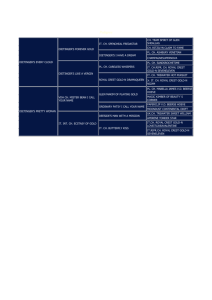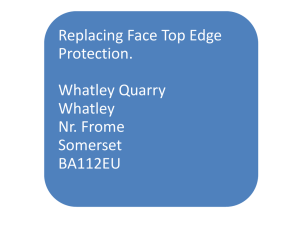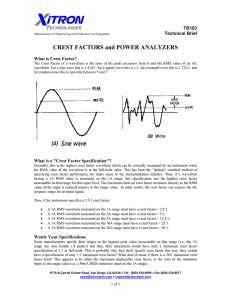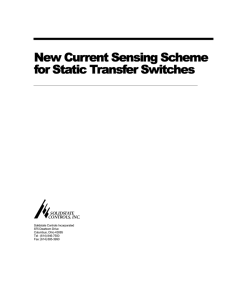Definition Crest Factor - AMETEK Programmable Power
advertisement
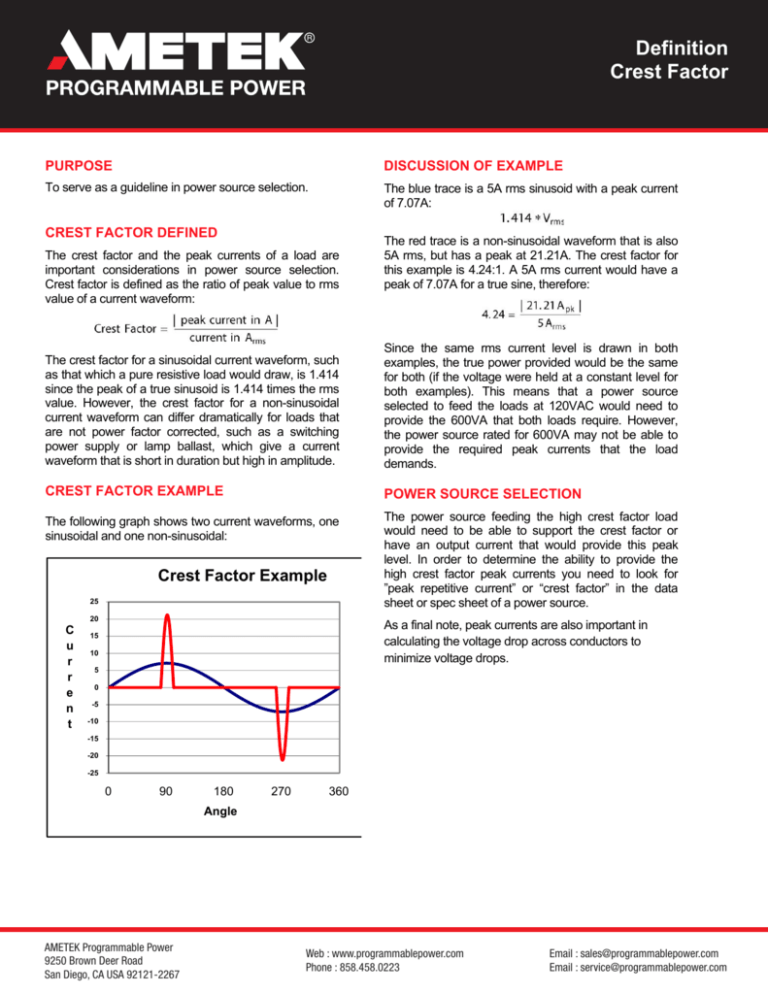
Definition Crest Factor PURPOSE DISCUSSION OF EXAMPLE To serve as a guideline in power source selection. The blue trace is a 5A rms sinusoid with a peak current of 7.07A: CREST FACTOR DEFINED The crest factor and the peak currents of a load are important considerations in power source selection. Crest factor is defined as the ratio of peak value to rms value of a current waveform: The red trace is a non-sinusoidal waveform that is also 5A rms, but has a peak at 21.21A. The crest factor for this example is 4.24:1. A 5A rms current would have a peak of 7.07A for a true sine, therefore: The crest factor for a sinusoidal current waveform, such as that which a pure resistive load would draw, is 1.414 since the peak of a true sinusoid is 1.414 times the rms value. However, the crest factor for a non-sinusoidal current waveform can differ dramatically for loads that are not power factor corrected, such as a switching power supply or lamp ballast, which give a current waveform that is short in duration but high in amplitude. Since the same rms current level is drawn in both examples, the true power provided would be the same for both (if the voltage were held at a constant level for both examples). This means that a power source selected to feed the loads at 120VAC would need to provide the 600VA that both loads require. However, the power source rated for 600VA may not be able to provide the required peak currents that the load demands. CREST FACTOR EXAMPLE POWER SOURCE SELECTION The following graph shows two current waveforms, one sinusoidal and one non-sinusoidal: The power source feeding the high crest factor load would need to be able to support the crest factor or have an output current that would provide this peak level. In order to determine the ability to provide the high crest factor peak currents you need to look for ”peak repetitive current” or “crest factor” in the data sheet or spec sheet of a power source. Crest Factor Example 25 C u r r e n t 20 As a final note, peak currents are also important in calculating the voltage drop across conductors to minimize voltage drops. 15 10 5 0 -5 -10 -15 -20 -25 0 90 180 270 360 Angle AMETEK Programmable Power 9250 Brown Deer Road San Diego, CA USA 92121-2267 Web : www.programmablepower.com Phone : 858.458.0223 Email : sales@programmablepower.com Email : service@programmablepower.com
